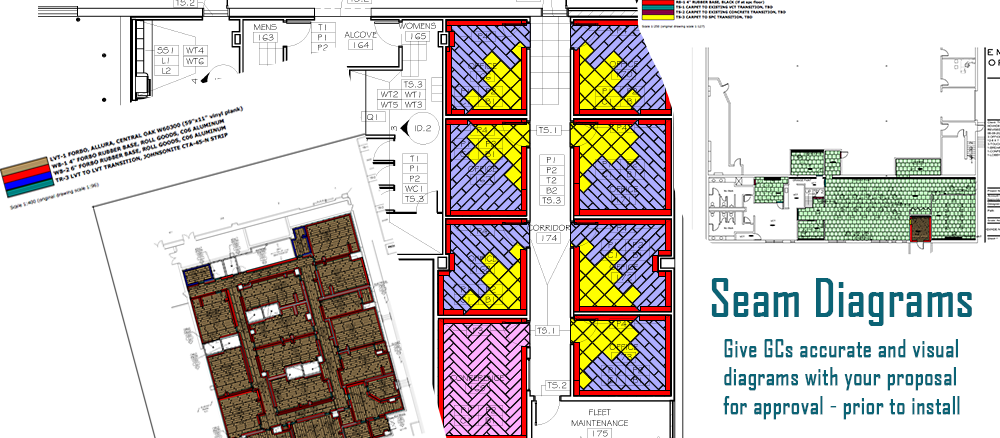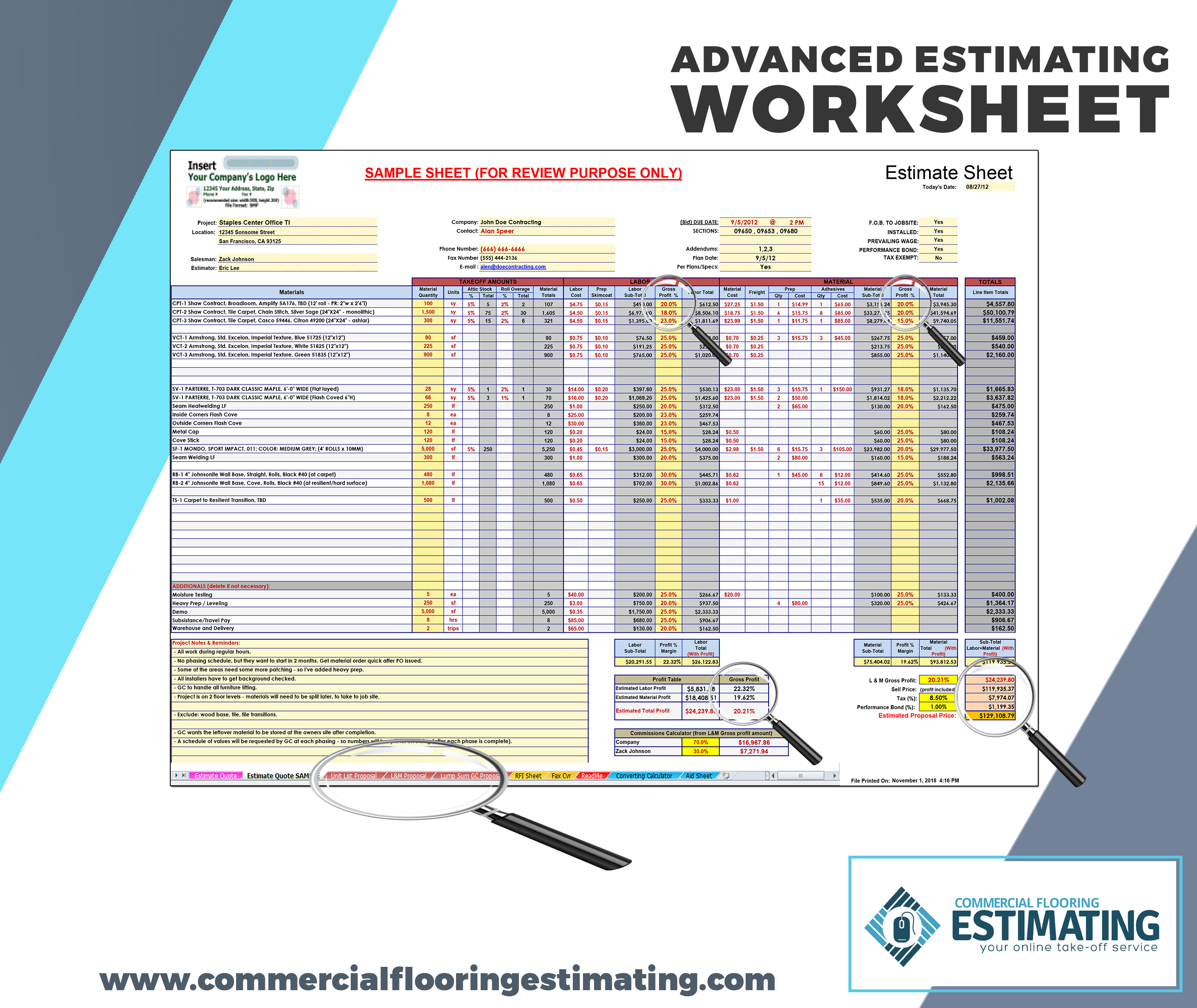Shop drawing are required: turn to full color coded seaming diagrams

Providing general contractors with full seaming diagrams along with bid proposals is crucial for several reasons, as it ensures transparency, accuracy, and clarity throughout the bidding and installation process.
Accuracy in Bid Amounts
Including detailed seaming diagrams allows general contractors to understand precisely how materials will be installed and where seams will be placed. This clarity ensures that the bid amount accurately reflects the scope of work outlined in the proposal. Without such diagrams, there may be misunderstandings or discrepancies between the bid amount and the actual installation requirements, leading to potential cost overruns or disputes down the line.
Clear Communication of Expectations
Seaming diagrams provide a visual representation of the proposed flooring installation, clearly indicating the layout, pattern, and placement of materials. By presenting this information upfront, contractors can ensure that their expectations align with those of the general contractor and the client. This helps avoid misunderstandings or disagreements regarding the scope of work and minimizes the likelihood of costly changes or revisions during the project.
Approval Process Streamlining
Including seaming diagrams with bid proposals facilitates the approval process, as general contractors can review and verify the proposed installation plan more efficiently. Having a clear understanding of how the materials will be laid out allows contractors to make informed decisions and provide timely approvals, expediting the project timeline and reducing delays.
Quality Assurance
Detailed seaming diagrams demonstrate a commitment to quality and professionalism. By providing comprehensive documentation of the proposed installation method, contractors convey their attention to detail and expertise in the field. This can instill confidence in the general contractor and the client, reassuring them that the project will be executed to the highest standards.
Risk Mitigation
Clear seaming diagrams help mitigate risks associated with miscommunication or misinterpretation of project requirements. By documenting the planned installation layout upfront, contractors can reduce the likelihood of errors, rework, or disputes during the project execution phase. This proactive approach to risk management ultimately protects all parties involved and contributes to a smoother, more successful project outcome
In summary, the inclusion of CFE's full seaming diagrams within bid proposals for commercial flooring projects is of paramount importance for several key reasons. Firstly, these diagrams serve as a linchpin for ensuring the accuracy of bid amounts by providing a comprehensive visual representation of how materials will be placed and seams will be integrated. This transparency is critical for aligning expectations between contractors and general contractors, as well as avoiding discrepancies that could lead to budgetary overruns or project delays.
Moreover, the provision of seaming diagrams facilitates clear communication of installation expectations. By presenting a clear layout and pattern of the proposed flooring materials, contractors can effectively convey their intended approach to the project, allowing general contractors to make informed decisions and provide timely approvals. This, in turn, streamlines the approval process and minimizes the potential for misunderstandings or disagreements regarding the scope of work.
Furthermore, the inclusion of seaming diagrams underscores a commitment to quality assurance. Contractors who meticulously document their proposed installation methods demonstrate a level of professionalism and attention to detail that instills confidence in both general contractors and clients alike. This assurance is invaluable in assuaging concerns about the project's execution and ensures that all parties are aligned on the expected standard of workmanship.
Additionally, the utilization of seaming diagrams serves as a proactive measure for risk mitigation. By documenting the planned layout upfront, contractors can preemptively address potential sources of error or miscommunication, thereby reducing the likelihood of costly rework, disputes, or delays during project execution. This proactive approach not only protects all stakeholders but also contributes to a smoother and more successful project outcome overall.
In essence, the inclusion of full seaming diagrams within bid proposals is a fundamental practice that underscores professionalism, fosters clear communication, upholds quality standards, and mitigates risks associated with commercial flooring projects. By embracing this comprehensive approach to documentation, contractors can enhance their credibility, build trust with clients and general contractors, and ultimately ensure the successful and seamless completion of their projects.






